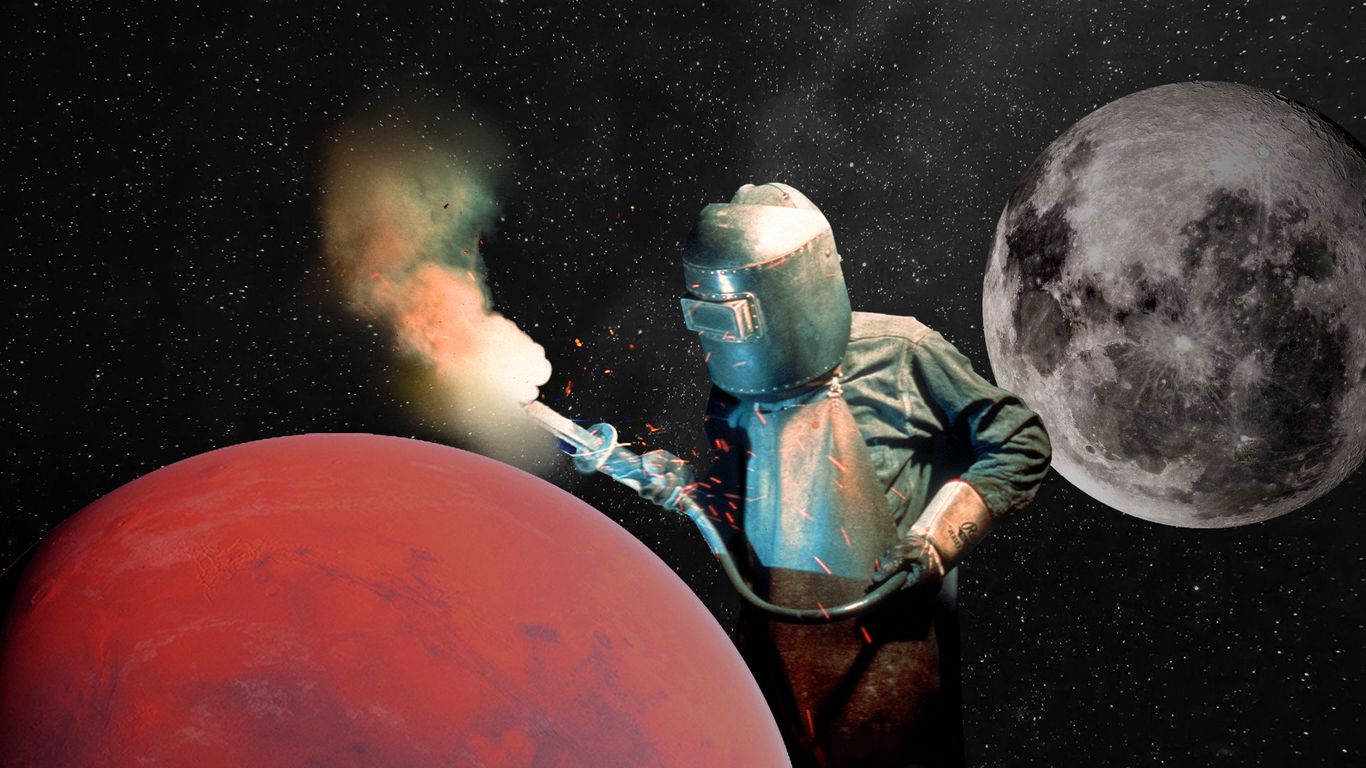
A drastic reduction in launch costs contributes to fueling a vision of space not only as an area of exploration or science, but also of real industry.
The big picture: In the short term, the space will likely become a place to manufacture products of high precision and value that benefit from a microgravity environment. But in the future, as Jeff Bezos pointed out in July after returning from his space trip, there could be a push to move heavy and polluting industries to operate in space..
A drastic reduction in launch costs contributes to fueling a vision of space not only as an area of exploration or science, but also of real industry.
The big picture: In the short term, the space will likely become a place to manufacture products of high precision and value that benefit from a microgravity environment. But in the future, as Jeff Bezos pointed out in July after returning from his space trip, there could be a push to move heavy and polluting industries to operate in space..
By numbers: Space companies generated a record investment of $ 7.6 billion last year, and a July report by Space Capital found that $ 9.9 billion was invested in all space companies in the second quarter of 2021 alone.
- “We are in the second golden age of space, and it will be a sustained golden age, as it is not only driven by government activity, but by commercial activity,” says Andrew Rush, managing director and president of the Redwire aerospace company.
Background: Space enthusiasts have long dreamed of not only exploring but building in space. But the high cost of moving material and people into orbit kept those dreams in the realm of science fiction.
- Thanks in large part to the efforts of private companies such as SpaceX and Blue Origin, the cost of launching payloads into orbit has dropped dramatically over the past decade, opening up space for smaller players who were previously out of the industry. .
- “As each launch becomes cheaper and cheaper to launch into space, it makes sense that very high and very expensive things are done in space per kilogram that go back to Earth,” says co-founder Josh Wolfe of the VC Lux Capital Company, which has invested in several space startups.
Years of work at the International Space Station have shown that microgravity can greatly benefit the manufacture of high-value materials such as fiber optics, drugs, semiconductors and even bioprinted human organs.
- “It’s similar to Amazon Prime, but your stuff isn’t made in China,” Wolfe says. “It is manufactured above China in space.”
- Varda Space Industries closed a $ 42 million A-Series round in July to fund its efforts to build a manufacturing platform in the space of manufactured products more efficiently in microgravity.
What to see: Improvements in 3D printing would allow more work to be done to build commercial infrastructure in orbit, rather than being transported by rockets from Earth.
- Made in Space, owned by Redwire, put the first 3D printer into space in 2014 and is working on developing an orbital platform for NASA that could mount structures in space.
- These advances can help the space industry become so detached from Earth, says Joe Landon, vice president for advanced program development at Lockheed Martin.
- “Eventually, the only thing we will launch from space will be people, because everything else we will build and find resources outside of Earth’s gravity,” he says.
The catch: Space, as the saying goes, is difficult, and as the pace of commercial launches increases, so does the possibility of something going wrong.
- On Thursday, the FAA landed Richard Branson’s Virgin Galactic after informing the New Yorker that the billionaire’s suborbital flight on July 11 apparently deviated from the course.
- The space industry faces the “challenge of growing rapidly and growing rapidly,” says Joe Schloesser, ISN’s senior director, who helps manage contractor safety. “Anyone who’s seen that in other industries knows there can be repercussions.”
The summary: Businesses have thrived on the exploitation of borders and space is the greatest of all.